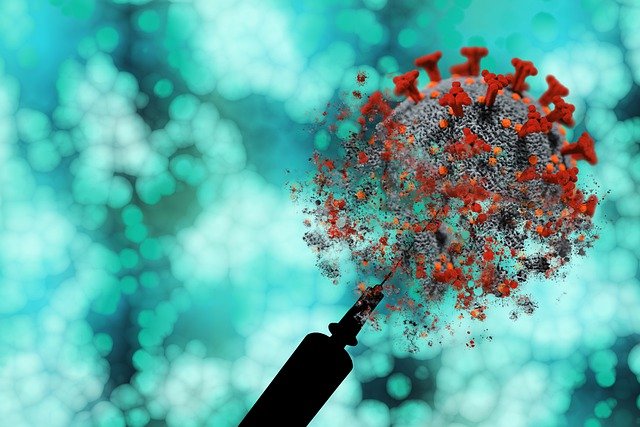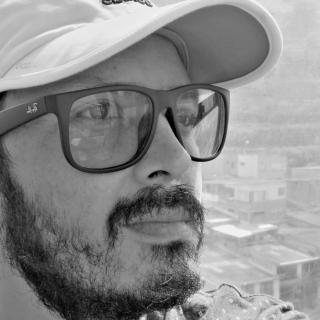
COVID-19: Tracking the virus in 2021
With the year closing amid new peaks and the arrival of more aggressive variants, COVID-19 continues to be the center of news worldwide
“Inequality around vaccines continues to divide our region. It will be necessary to apply some of the teachings of the pandemic in order to control it and guarantee access to future therapeutic options against COVID-19.”
That was a tweet posted on Dec. 15 by the Pan American Health Organization (PAHO) and World Health Organization (WHO), highlighting one of the many serious failures of the past year, and another reason why the world is closing out 2021 still looking down the COVID-19 barrel and not beyond it.
Si te reúnes para eventos sociales o religiosos esta temporada de fiestas, ten en cuenta que es más seguro realizarlos al aire libre o de forma virtual
— OPS/OMS Guatemala (@OPSGuate) December 20, 2021
Considera limitar la celebración a solo aquellos que residen en tu hogar #FiestasSaludables#SaludParaTodos pic.twitter.com/mD2Z3cr2Lb
With a complicated closure of 2021, especially in Europe where several countries are experiencing records of daily infections, here is a timeline of how we ended up right back where we started.
RELATED CONTENT
- On Jan. 13, PAHO Director, Dr. Carissa F. Etienne, issued the following warning: “Our collective ability to keep up with these measures has the power to define the trajectory for this year. If we remain diligent, we will have the power to control this virus; if we relax, make no mistake: 2021 could be much worse than 2020. The issue of variants has been one of the main concerns of the health authorities since the beginning of the year. Likewise, the importance of continuing to implement the available self-protection measures, such as social distancing, the use of masks and frequent hand washing, has not ceased to be emphasized, actions that have lost their rigor with the growth of the phases of economic reactivation in the different countries."
- The month closed with painful figures. By Jan. 27, a million people had died in all the Americas — a number added to the 44 million infections throughout the entire pandemic to that point, including more than 2 million in the last week of January.
- On Jan. 28, the presence of three new variants of the SARS-CoV-2 virus were announced in 14 countries.
- On Jan. 29, the WHO published an updated list of essential diagnostic tests, also calling on countries to invest in them.

- The second month of the year began with a worrying fact for women. On Feb. 2, PAHO warned that COVID-19 disproportionately impacts women. “While men were more likely to get sick from COVID-19 at the start of the pandemic, now those trends are reversing. Currently women have the same probability of developing the disease and are more vulnerable on many other fronts,” alerted the director of the organization.
- By this month, there were also 20 countries in the Americas in which the variants had been detected and more than a million health workers had contracted the virus in the region, with more than 4,000 deaths, mostly women.
- On Feb. 9, PAHO urged the countries of the Americas to ensure they are prepared for the deployment of vaccines against COVID-19. Likewise, it was confirmed the following day that the the approved vaccines will reach the Americas through the COVAX coalition despite the circulation of new variants.
- Two versions of the AstraZeneca vaccine were included in the WHO emergency use list on Feb. 15.
- On Feb. 24, the PAHO director asked the international community to make access to COVID-19 vaccines in the Americas "a global priority," given that the region was considered the "epicenter" of the pandemic. On this day, the first shipment of vaccines was also sent to Ghana through COVAX (the only global effort that works to guarantee equitable access to vaccines, regardless of income and size of countries).
- On March 1, Colombia became the first country in Latin America to receive vaccines through COVAX.
- On March 3, PAHO called attention to the increase in cases north of the Amazon, in Loreto, Peru, Acre, Brazil, and the Amazonas Department in Colombia.
- Johnson & Johnson's vaccine was added to the list of safe and effective tools against COVID-19 on March 12.
- Faced with the decision by some European Union countries to temporarily suspend the use of AstraZeneca's COVID-19 vaccine as a precautionary measure against rare blood clotting disorders in people who had received the vaccine, on March 17, The WHO endorsed the vaccine, arguing that the benefits of the AstraZeneca vaccine outweighed its risks and recommended that it continue to be used.
- PAHO warned on March 23 of a rebound in COVID cases in South America, where infections were reported to be increasing in Chile, Paraguay and Uruguay.
- On March 30, the WHO requested more data on the origin of the coronavirus and stressed that all the hypotheses were still open.

- On April 23, PAHO called for closing the vaccination gap and unequal access to vaccines amid the pandemic.
- “One in four deaths from COVID occurred in the Americas,” PAHO said on April 28.
- Moderna's vaccine is included on the WHO emergency use list on April 30.
- On May 5, PAHO warned that COVID hospitalizations and deaths in adults and young people skyrocketed in the Americas.
- On May 7, the WHO included the Sinopharm COVID-19 vaccine on its list for use in emergencies.
- The PAHO director once again called for closing the gaps in vaccine access and invited pharma giants to expand their production in Latin America and the Caribbean on May 19.
- On May 21, Latin America and the Caribbean exceeded 1 million deaths from COVID-19.
- WHO opened the month by validating the Sinovac vaccine for emergency use on June 1.
- On June 30, the PAHO director assured that the approved vaccines are effective despite the variants of concern.

- On July 15, a UNICEF report was shared that warned of the decline in childhood vaccination as a result of COVID-19.
- After a month without relevant announcements by the WHO and PAHO, the last one reported on September 1 that only one in 4 people was vaccinated in Latin America and the Caribbean.
- On September 8, the Director of PAHO highlighted the importance of prioritizing the vaccination of pregnant women and infants.
- Vaccine manufacturers and international organizations agreed to intensify cooperation to supply biologics, this on September 16.
- On September 17, before the United Nations General Assembly, the WHO called for vaccine equity.
- PAHO announced the increase in vaccine procurement for the Americas on September 29.

- On Oct. 7, the WHO and United Nations established a series of measures to achieve the global vaccination goals.
- Qatar and the WHO reach an agreement to guarantee a "healthy and safe" World Cup. The announcement was made on Oct. 18.
- PAHO announced on Nov. 3 that COVID cases decreased in the Americas, but maintained its call not to lower its guard. That same day, WHO published a list of the eight approved vaccines.
- On Nov. 26, the Omicron variant is classified as "worrying" by the WHO.
Omicron is a variant of the virus that causes #COVID19. To protect yourself and others:
— World Health Organization (WHO) (@WHO) December 20, 2021
Get vaccinated as soon as it's your turn
#WearAMask
Keep physical distance and avoid crowds
Open windows
Cough/sneeze into your elbow
Clean your hands
- On Dec. 1, PAHO urged the application of special measures and an acceleration of vaccinations against the Omicron variant.
- PAHO announced on Dec. 3 the identification of Omicron and other variants of concern in the Americas.
- The number of COVID cases tripled in 2021, according to information from PAHO released on Dec. 15.











LEAVE A COMMENT: